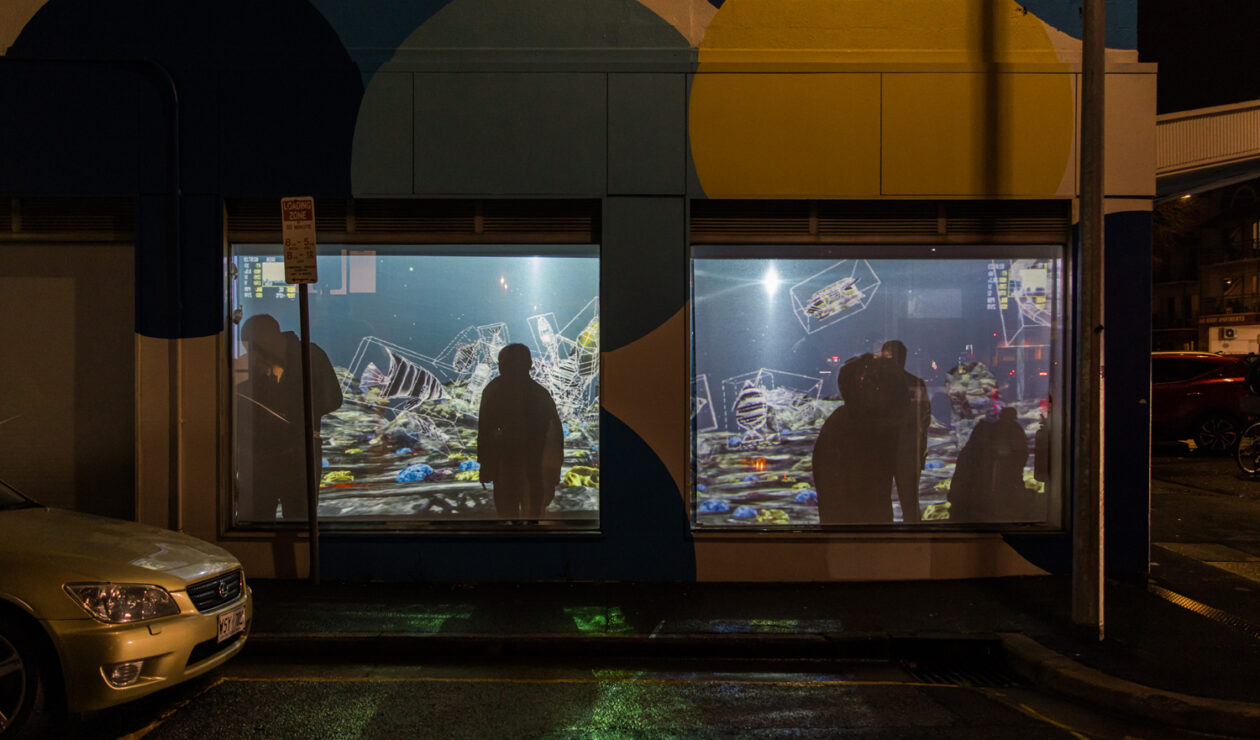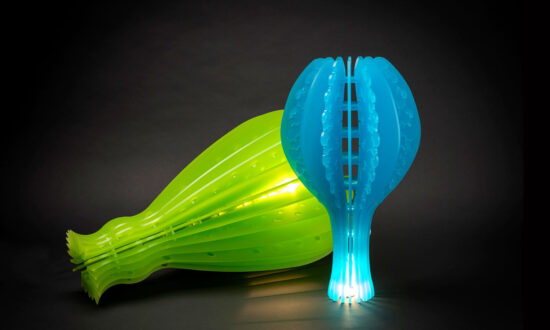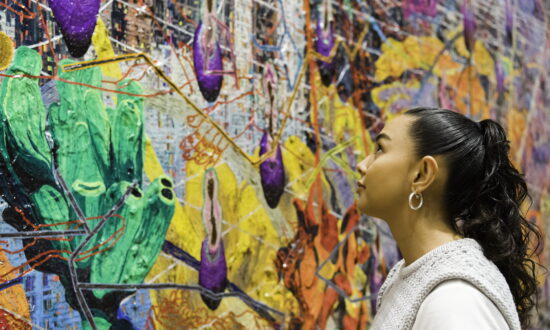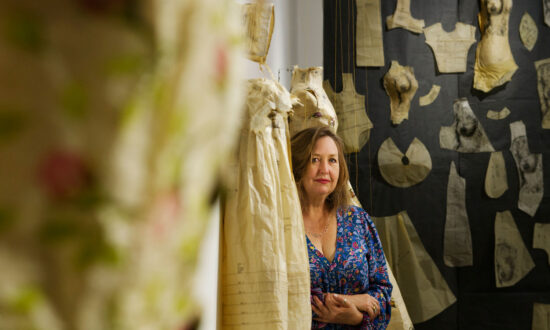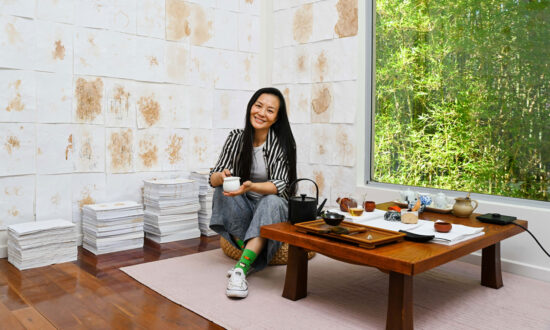An earthquake occurs at the crash of two tectonic plates. After the impact, the edges of these plates become an epicentre – the point of origin from where seismic waves travel along the surface, sweeping and disrupting everything in their wake.
Let that sink in. In such a collision, what used to be peripheral becomes central. The fringes become a core that sends massive shockwaves in every direction.
This is what happens when two starkly different realms, like art and technology, converge. The nature of cross-disciplinary collaboration is such that when boundaries are transgressed, the margins are brought to the forefront. At this epicentre of genres and disciplines, the inconceivable becomes not only real, but commonplace.
Make|Shift is one such epicentre. Presented by The Mill as part of the recent Illuminate Adelaide festival, this immersive and experimental exhibition featured digital image and projection-based works by five South Australian artists: Ray Harris, Sarah Neville, Liam Somerville, Inneke Taal and Tanya Voges. Larrakia man James Alberts was videographer and artistic documenter, with Margie Medlin the artistic and curatorial facilitator. The artists were supported by artistic mentorship from Tim Gruchy and Illuminart’s Cindi Drennan.
In her curatorial statement, Medlin explained: “Make|Shift invited artists to explore their approach to formal notions of screen media in an art gallery context. We invited each other to provoke the boundaries and traditions of photography, the moving image, sculpture, performance, and interaction within screen technologies.”
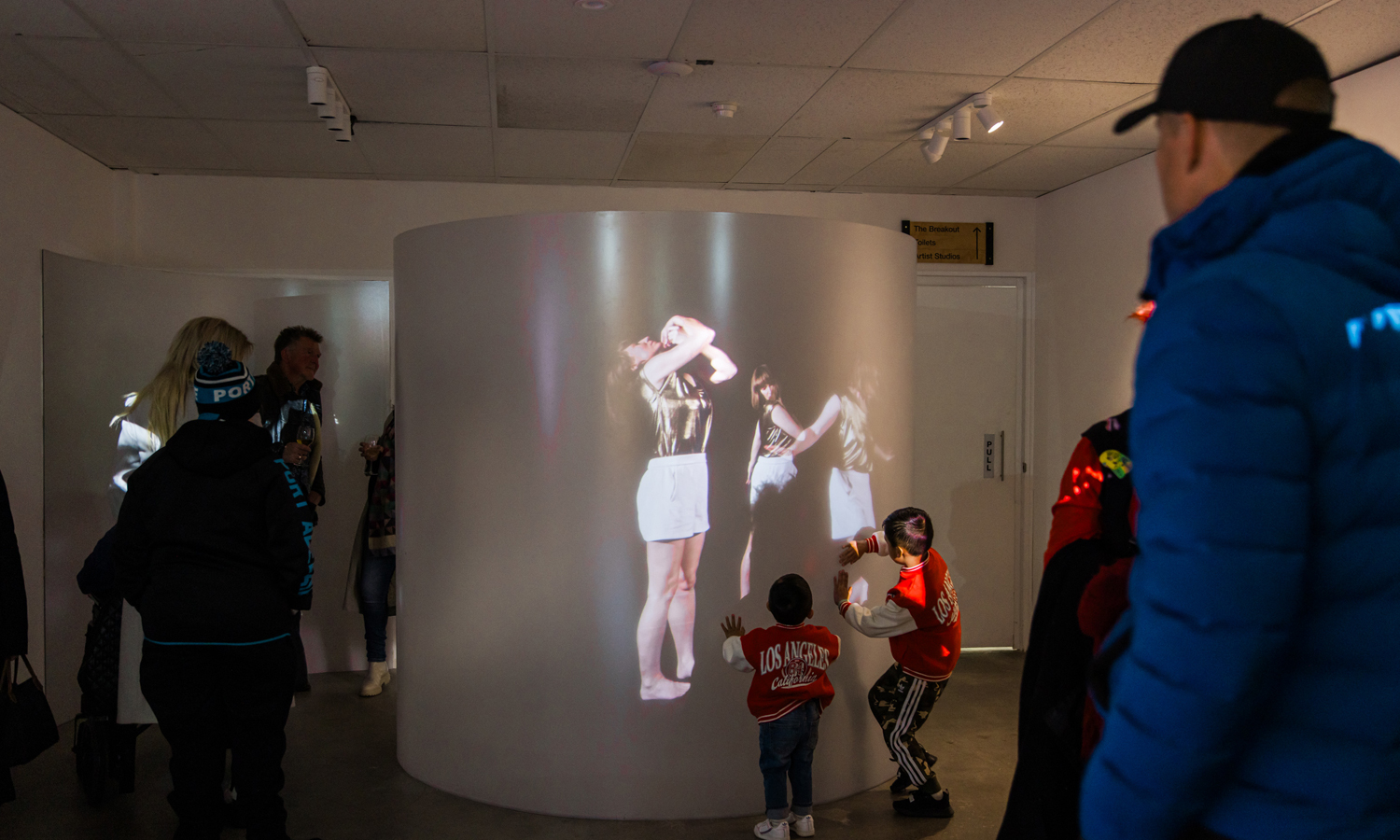
Young visitors interact with Tanya Voges’ With/In at the Make|Shift exhibition opening. Photo: Daniel Marks
Make|Shift began as part of Expand, The Mill’s responsive development program challenging artists to explore interdisciplinary, site-specific and audience-focused new work. Specifically, it originated in Expand’s 2021 program Cinematic Experiments, a 10-day creative laboratory exploring hybrid and digital platforms.
Out of those who participated in Cinematic Experiments, five were then selected to continue in a follow-up program held two years later in which they dedicated time to experimenting with projection technologies within their practice.
This process ignited new ways of thinking about projection art by teaching the participants about the history and science of the art form itself, as well as technical production skills. Notably, they were taught to use Troikatronix’s Isadora, an all-purpose creative production software (an “everything program”, as Somerville aptly puts it) that later became the primary tool they utilised in Make|Shift. This extensive process of learning and development resulted in some extraordinary, boundary-pushing artworks presented in the exhibition.

In Ray Harris’s Spirit Shelf, moving images of animals are projected onto a shelf full of objects. Photo: Daniel Marks
Of all the participants, Somerville is perhaps the one whose practice is closest to technology. In his work as a filmmaker, under the banner of CAPITAL WASTE PICTURES, he has worked with various technological tools, from camera to lighting to computer software and hardware. As technology inevitably evolves, he must evolve with it.
“My digital creations often use unique mixes of old, new and repurposed technology to create signal corruption to get glitchy analog flavour in videos and animations,” Somerville explains.
“I see this as a collaboration with technology where we work together to create something different; where I guide the tech but the tech also guides me. This process allows for happy accidents and adds chaos to my workflow. ”
His Make|Shift work explored the theme of extinction and conservation. Titled marine_digital_conservation_SA_2023.exe, this 3D aquarium filled with rotating, pixelated marine fauna looks toward a dystopian future where humanity’s unsustainable consumption practices have resulted in mass extinction. The work was inspired by digital conservation projects such as that of the Pacific island nation of Tuvalu, which is creating a digital twin of itself as a desperate solution to the inevitable submerging due to rising sea levels.

Make|Shift installation view featuring Inneke Taal’s A series of self-credits (as object; as site; as act). Photo: Daniel Marks
Unlike Somerville, Taal says she has “always treated technology as a kind of foreign/alien object”. Even though she has incorporated technology into her practice before, she also exercised a deliberate resistance to mastering its capabilities.
“I still try to maintain a naivety in my approach to technology while developing a deeper understanding of its possibilities – a slight paradox, but I like it that way,” Taal says. “The unknown or unforeseen is its own kind of technological apparatus perhaps.”
In Make|Shift, she learned more about cross-disciplinary and collaborative modes of production, through working with more advanced technological tools as well as more experienced mentors and teammates, which helped her explore the intersections of her practice.
Taal’s work, A series of self-credits (as object; as site; as act), is a string of inner dialogue presented as a rolling self-credit projected on uneven surfaces, representing her wish to “interrogate the inextricable act of self-crediting that goes into making and viewing art”. She describes it as a “cross-over of theatricality behind the gallery (white cube) and the theatre (black box) as corresponding spaces”.
The exhibition also featured Neville’s T = I / Io Transmittance – a daylight simulator that explores the amount of light energy that is absorbed, scattered or reflected by glass; Harris’s Spirit Shelf – moving images of animals projected onto a domestic shelf filled with books, jars and other mundane everyday objects; and Voges’ With/In – a kinaesthetic exploration where projections of the artist’s dance moves respond to the viewer’s movement in the exhibition space.

Get InReview in your inbox – free each Saturday. Local arts and culture – covered.
Thanks for signing up to the InReview newsletter.
In the end, it’s not about using the most sophisticated or cutting-edge technology, but about experimenting and collaborating using technology as a conduit.
Not long after the program concluded, everyone promptly moved on – whether artistically or geographically – to their next adventures. For example, just as I was about to write this piece, Medlin had already left for India and Taal for the Netherlands, no doubt taking their learnings with them and creating new epicentres wherever they go.
When art meets technology, it creates a ripple effect that lasts seasons and extends borders, perhaps powerful enough to make seismic waves and shift tectonic plates.
Aushaf Widisto is The Mill’s current writer in residence. This article was contributed through The Mill’s writer-in-residence program. For more information on the program, see here.
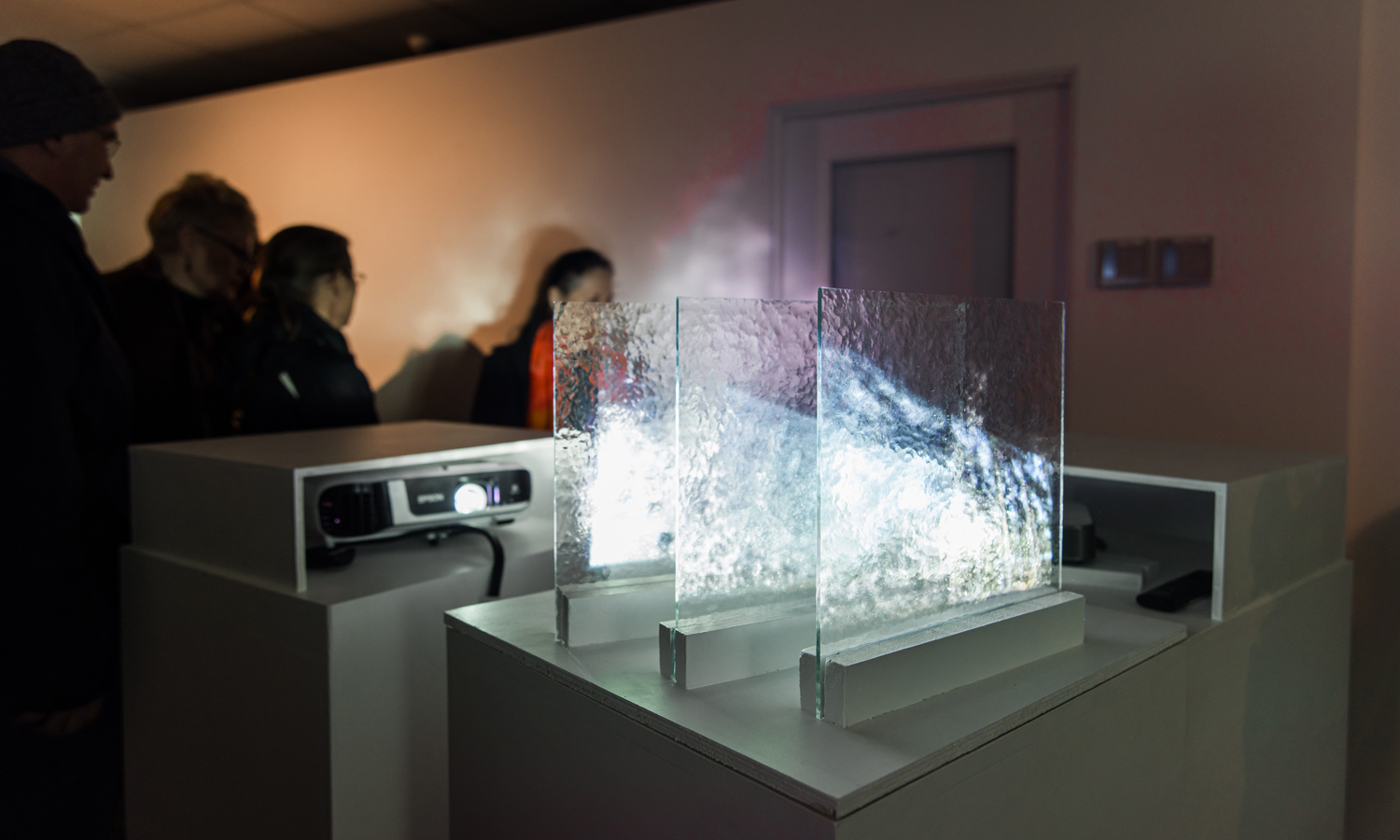
Sarah Neville’s T = I / Io Transmittance in the Make|Shift exhibition. Photo: Daniel Marks
Support local arts journalism
Your support will help us continue the important work of InReview in publishing free professional journalism that celebrates, interrogates and amplifies arts and culture in South Australia.
Donate Here
